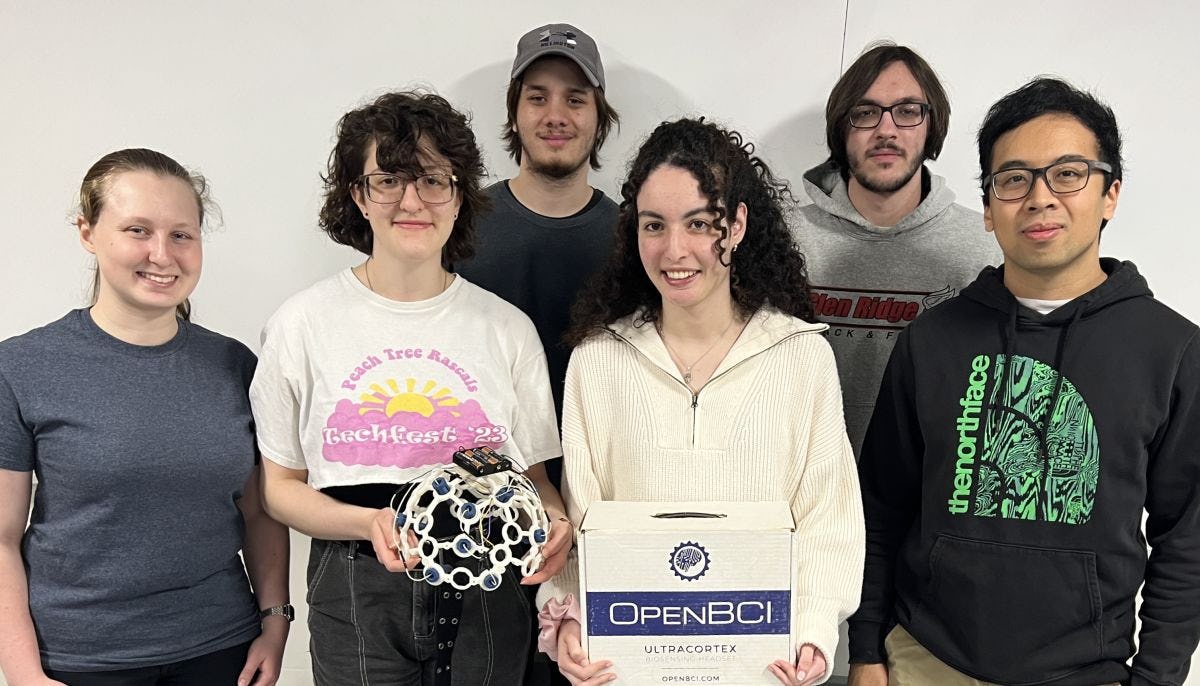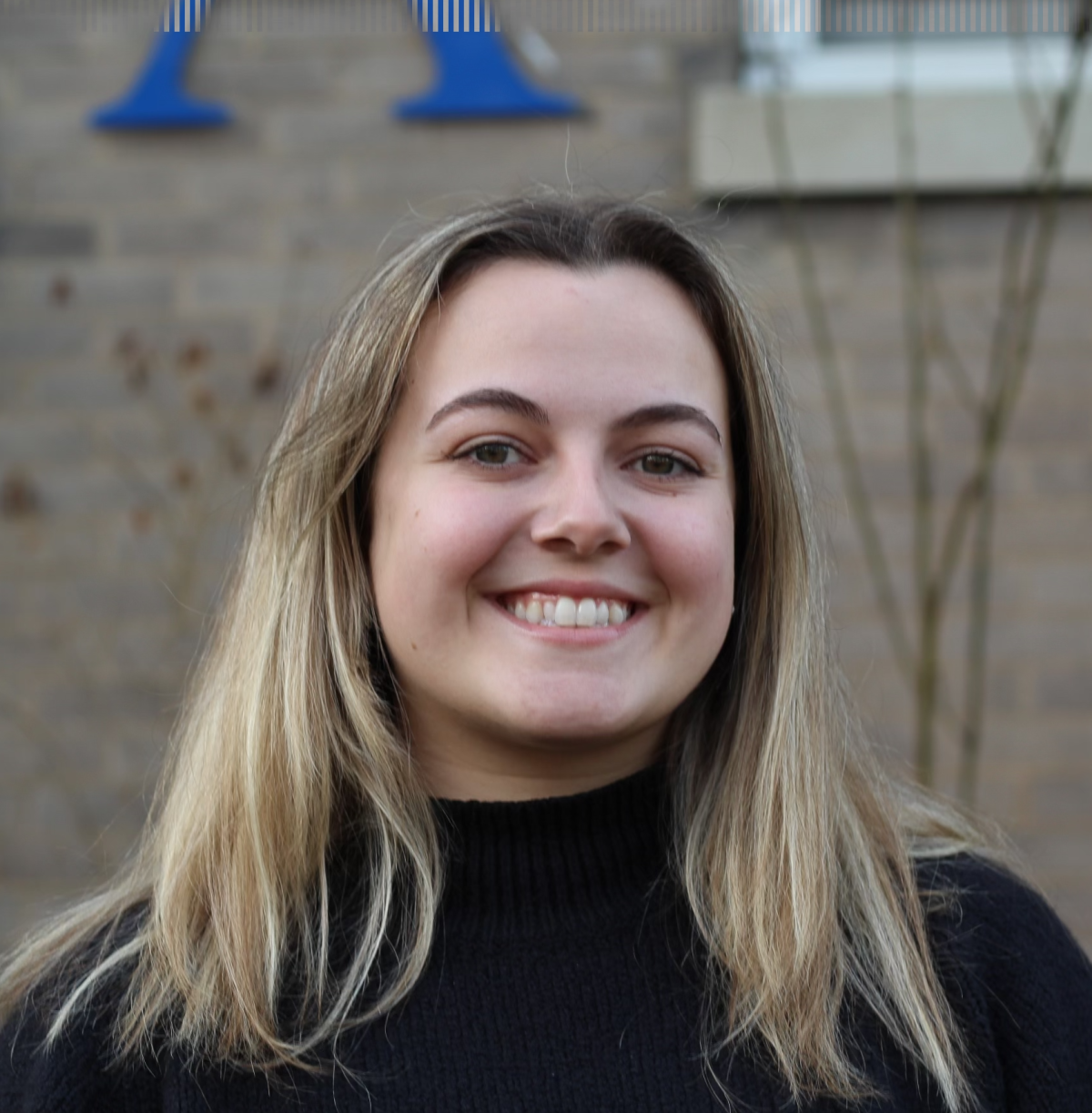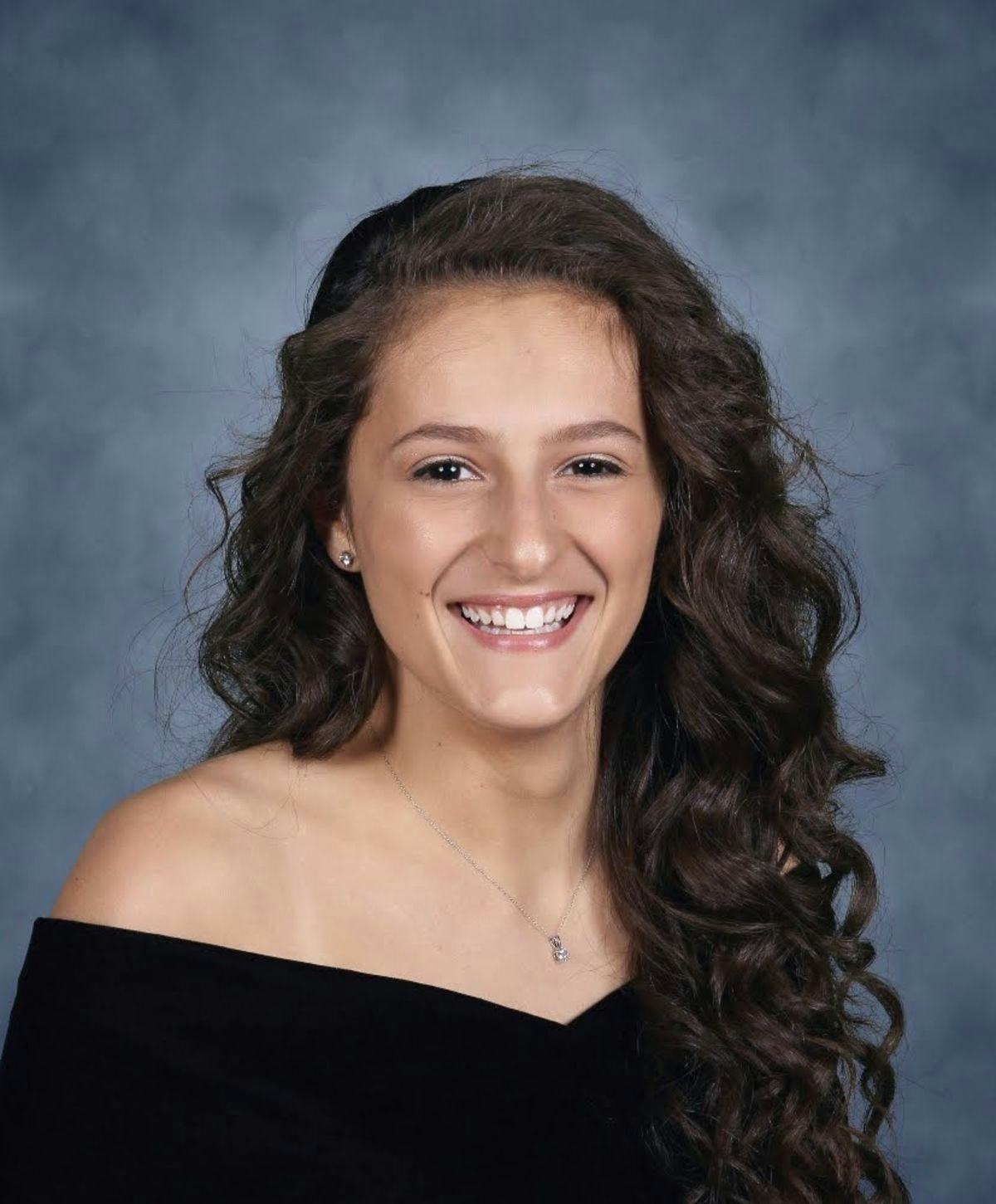Stevens Seniors Advance Health & Medicine at Innovation Expo 2024
Students show ‘they care’ by developing technologies that could improve health services and lead to progress in medical R&D
Stevens Institute of Technology deploys comprehensive efforts to address the vital health and medical challenges of our time, raising “Health & Medicine” as one of its six foundational pillars of research and leading expertise. At Stevens’ annual Innovation Expo, a day when seniors showcase their ingenuitive capstone projects, numerous teams presented their efforts in developing technology to advance healthcare. The event drew crowds to witness students presenting their projects and inventions across the entire campus on April 26, 2024.
Project: CorText BCI
In today’s world of technology and communication, the inability to use a computer can be a serious hindrance to accomplishing everyday tasks — yet for many with disabilities, this is a reality. That’s why, for their capstone project, a team of computer engineering students at Stevens Institute of Technology designed software that converts brain waves into computer mouse input.
All too often, computers simply are not accessible to the estimated 16.6 million Americans who are affected by carpal tunnel syndrome (1-5% of the population) or muscular dystrophy (5.1 per 100,000 individuals). To solve this problem, seniors Victoria Beke ’24, Zoe Casten ’24, Janet Hamrani ’24, Christian O'Connell ’24, Jason Pinga ’24 and Matthew Vaughan ’24 created the program CorText BCI.
CorText BCI is compatible with the hardware Open BCI, an electrocap worn on the head that sends signals from the brain — as measured by electroencephalography (EEG) — to the CorText software.
Using machine learning, CorText BCI transforms EEG data into signals that control a cursor. This input can then be used in conjunction with the computer's on-screen keyboard — without the need for an actual physical keyboard or mouse.
“CorText is perfect for people who can’t operate a mouse or trackpad; we take non-invasive EEG data and translate that into hands-free mouse movement on your laptop or computer,” said Casten, who plans to return to Steven’s to purse an accelerated master’s program in the field of applied artificial intelligence.
The CorText BCI team hopes that their software will make brain-computer interfacing accessible to the masses, including people who otherwise could not afford it.
Of their Stevens experience, Casten added, “I wouldn’t trade it for the world.”
The team was advised by Zhuo Feng, professor, Department of Electrical and Computer Engineering.
Project: MedFlex Tech
For those recovering from injuries or surgery, or for those who have overwhelming schedules, traveling to a medical facility for muscle and bone stimulation treatments can be prohibitive. In recent years, there has been an even greater demand for home-based medical care, whether it be through tele-appointments, or devices and equipment for at-home use that enable individuals to take their health into their own hands.
Sponsored by SeebeckCell Technologies, a team of Stevens seniors embarked on a mission to address this challenge. The team — comprised of mechanical engineering majors Nicholas Dahdah ’24, Michael Goodall ’24, Colin Keady ’24 and Nicole Waletzki ’24 in the Charles V. Schaefer, Jr. School of Engineering and science; and software engineering majors Lauren Ingraham ’24 and Eshan Sharma ’24 from the School of Systems and Enterprises — worked tirelessly in Stevens’ MakerCenter to design MedFlex Tech: an at-home electric muscle stimulation and bone growth stimulation device.
Their invention can provide prescription-level treatment in the comfort of one's own home. The device was found to reduce recovery times, improve healing processes, and enhance convenience for users.
“There isn’t a product on the market that incorporates both bone growth and muscle stimulation with the use of a mobile app,” said Keady, who will search for a full-time position upon graduation. “Our product would be the first all-in-one treatment device that would allow users to get medical treatment in the comfort of their own home.”
By bringing effective medical care directly to users' homes, the student creators of MedFlex Tech hope to revolutionize the at-home medical care industry, making healthcare more accessible and convenient for individuals worldwide.
Of his education, Keady said, “I value the hands-on experiences that Stevens offers as part of the curriculum. These opportunities have allowed me to apply the knowledge learned in lectures in real-world scenarios and improve my problem-solving skills.”
The team’s advisor, Zahra Pournorouz, teaching assistant professor in the Department of Mechanical Engineering, said, “I would highlight their proactive approach to overcoming challenges, effective collaboration with team members from diverse engineering backgrounds, and their continuous dedication to learning and improvement throughout the project…
“This exemplifies the multidisciplinary ethos and practical problem-solving emphasis inherent in a Stevens education, underlining the university's commitment to real-world collaboration and innovation across engineering disciplines.”
Project: WoundWatch Chronic Wound Monitoring System
Annually, 12.8 million people with diabetes in the U.S. are at risk of developing chronic wounds that fail to heal within 12 weeks. These non-healing wounds often lead to amputations, costing each patient on average upward of $55,000, and a life that is forever-changed. With the problem of this scale in mind, a team of Stevens senior students designed WoundWatch Chronic Wound Monitoring System, a device that helps patients monitor the health status of their wounds within minutes from the comfort of their own home.
The project served as the senior capstone project for biomedical engineering majors Andrew Dzikowski ’24, Janelle Garcia ’24, Amelia Rehrig ’24, Hans San-Luis ’24 and Morgan Whitlock ’24. Together, they wanted to improve upon disparities in patient care, reduce patient noncompliance, and ease both the physical and financial risk of amputations.
“Our entire device is roughly the size of a soda can!” said Rehrig, who, upon graduation, plans to join the Johns Hopkins University Applied Physics Laboratory. “We strived to ensure our device was portable and handheld, allowing a wide range of patient populations to operate it with ease.”
In the typical treatment of these wounds, patients require excessive visits with their physician for visual wound inspections, which are subjective to each physician’s opinion. However, WoundWatch utilizes daily pH, temperature and blood oxygen saturation measurements to aid in close monitoring of the healing status of diabetic wounds.
Advising the team were Sally Shady, teaching associate professor and associate chair of undergraduate studies; and Hongjun Wang, professor; both in the Department of Biomedical Engineering.
“The WoundWatch team was on a mission to address the issue of diabetic wound management,” said Shady. “Recognizing this critical clinical need, particularly among elderly patients who struggle to assess wound development, they were dedicated to understanding the intricacies of wound healing complications.”
With a user-friendly interface and real-time analytics, WoundWatch fosters collaborative care, promising to enhance diabetic wound management and patient healthcare delivery.
“This device empowers patients to actively participate in their healthcare and improve their quality of life while potentially preventing the development of serious complications,” said Shady.
Penn Medicine - University of Pennsylvania Health System sponsored this effort.
Project: Unionization and Modern Healthcare & Industry: Fact versus Fiction
When workers go on strike, services are often compromised. But what happens when these workers are in healthcare? Can we count on essential services to continue, and maintain their quality?
For their senior design project, two Stevens Institute of Technology students in the Department of Chemistry and Chemical Biology sought these answers.
Chemical biology major Michella Chiaramonte ’24 and chemistry major Laura Masciola ’24 conducted thorough literature searches to determine the impact of strike actions in the healthcare and science-related industries.
“By illuminating the complex nature of strikes and their impacts, our project aims to contribute to more informed discussions and provide meaningful learning value for people in and joining the professional world,” said Chiaramonte and Masciola in a joint statement.
The duo’s findings revealed that strikes do not significantly affect patient mortality, but they do have a substantial impact on healthcare utilization, leading to significant declines in emergency room admissions and elective surgeries, and increased cancellations of outpatient appointments during strike periods — perhaps due to a lack of patient trust.
However, through the development of an educational piece, Chiaramonte and Masciola argue that we can safely rely on a healthcare organization’s ability to uphold a high quality of care during strike periods.
The team was advised by Donald Lombardi, teaching professor, School of Business; and Patricia Muisener, teaching professor and associate chair for undergraduate studies, Department of Chemistry and Chemical Biology.
Lombardi praised the students, saying, “Laura and Michella insightfully addressed the varied and vexing dynamics of labor relations in New Jersey, with the results being a very credible masterwork teeming with valuable information and noteworthy learning value. This work was as good, if not better, than anything I've seen regarding healthcare labor relations at any level of academe or business!”
Upon graduation, Chiaramonte will begin her medical degree at Ross University School of Medicine. Masciola plans to stay at Stevens to earn her M.S. in chemistry.



